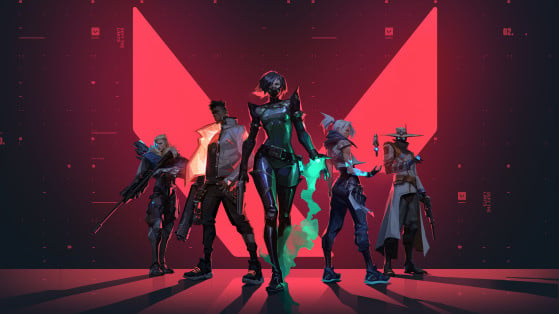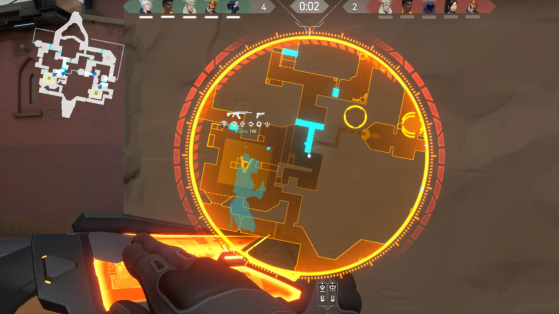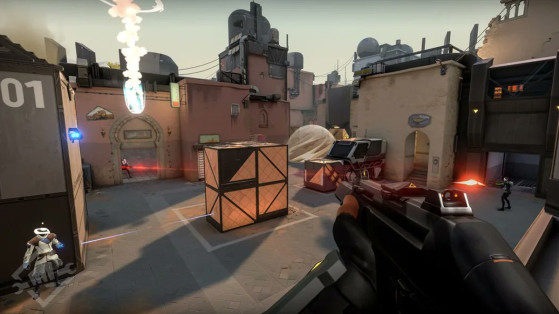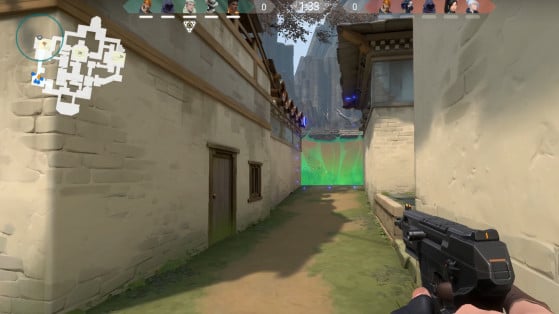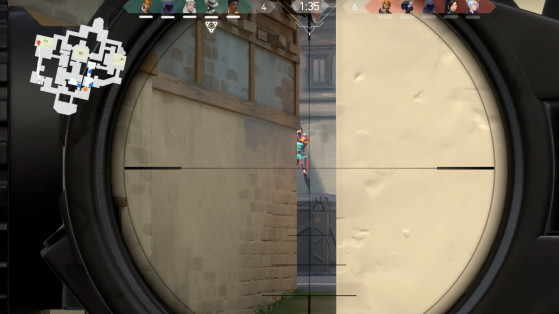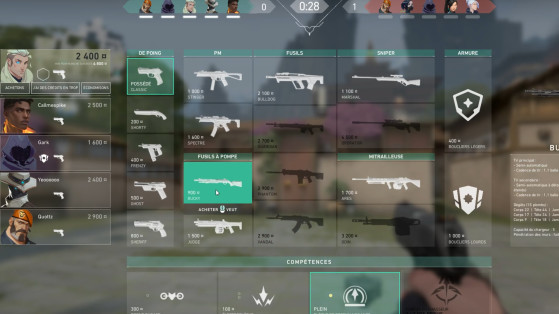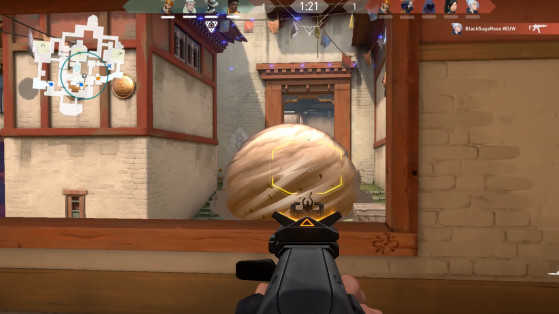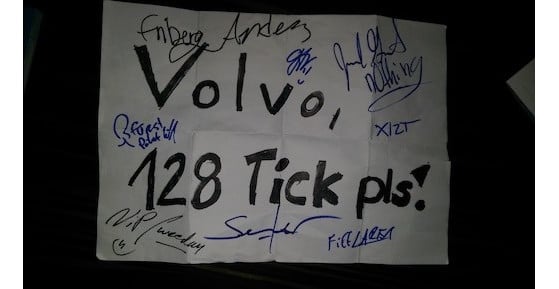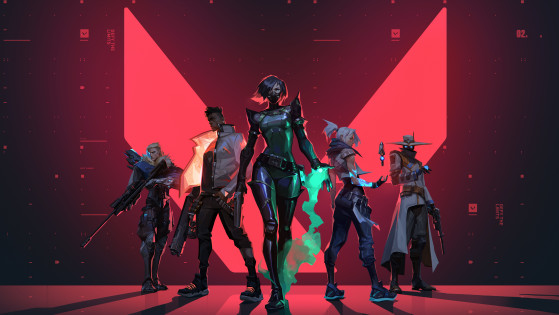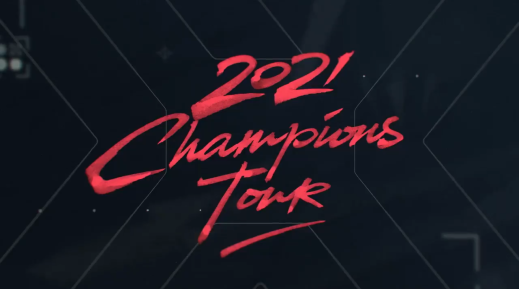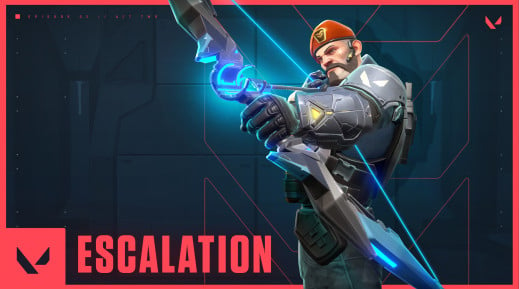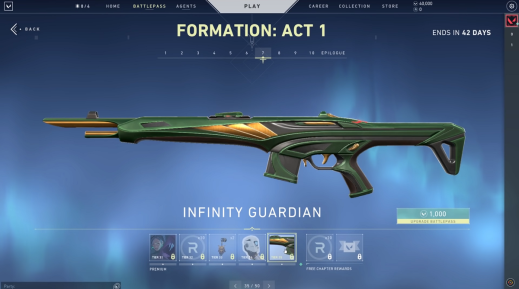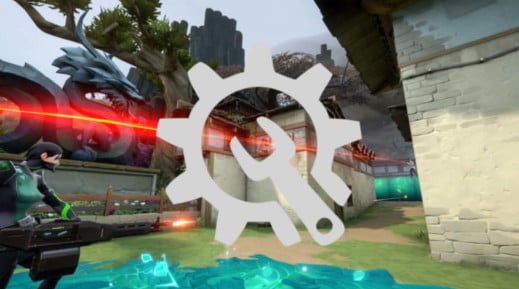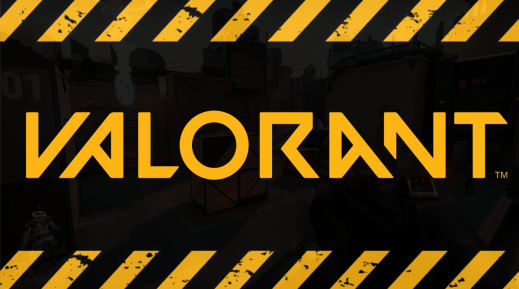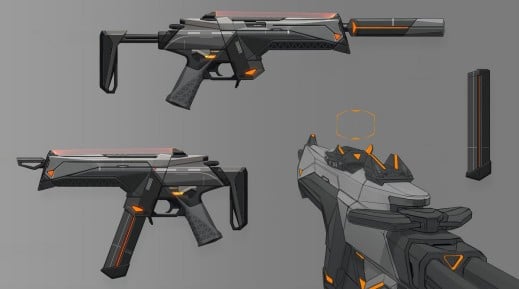Valorant borrows many elements from the greats of the genre, and brings them together in a single package that puts forward a strong case for being your next competitive FPS.
Even if it won't revolutionize the genre, Riot Games have created a title that does exactly what is expected of it. Between the precision, reliability, level design, balancing, and in-game mechanics — there are few dark spots.
Riot Games hit the target
Valorant is already a great game, even in its early-access form. Influencers and players who had been able to test it several months ago had already expressed their view thatthe game was 'already playable'.
Since then, it seems Riot have taken the time to fine-tune the game. In short, Valorant is simple, effective and enjoyable.
You play as an Agent — one of ten available at launch — who can use the same weapons as allies and enemies alike, but who has four unique abilities. These abilities differ in their types, and bring a very interesting depth to gameplay, as well as variety in the course of playing the rounds.
These Agents come in some classic archetypes. First of all, there are abilities to mask access with clouds of toxic smoke or shadow domes. Then come skills to block access without obstructing vision, such as with molotovs, a slowing zone, or a puddle of poison.
We can also use skills to blind the enemy or blur vision of your opponent's map. Less familiar in classic FPS games but more prevalent in the likes of Overwatch, we also find teleports, walls, jumps, healing, and air strikes — there are many possibilities and variations.
Armed with your skill kit and weapons, you must (when attacking) put down an explosive charge (a "spike") and then prevent the opposing team from defusing it, in a game that can last up to 24 rounds. Halfway through the game, you switch sides and reverse roles. The first team to win 13 rounds takes the overall victory.
One round consists of two to three phases. The first is a preparation phase lasting 45 seconds, during which the two teams are separated. Both teams place themselves as they wish on their side of the map, limited by temporary walls.
Players can also spend their economy on weapons and skills, set up a strategy, for some Agents such as Cypher, activate skills such as cameras and traps to detect the passage of an enemy.
At the end of this 45-second countdown, the temporary walls that separated the two teams disappear and the round begins proper.
The attackers must then take up positions in the buffer zone — inaccessible during preparation — to play out the first duels. Since the defenders can also advance offensively in this zone, all lines of sight, nooks and crannies can shelter an enemy or be the scene of a first firefight.
Maps have very little scenery behind which to take cover. It forces attackers to advance carefully, and they must launch their final offensive in sync. Maps also offer many crossing points, where players are vulnerable from several different angles.
In such situations, it's impossible to check all angles at the same time — you must either block, position yourself to remove certain angles, or advance as a team and spread out the "cleaning" of the site correctly.
Before clearing a site to place the spike, it may be necessary to weaken enemy positions. This is called "map control" and is where players will try to make pure skill speak in duels.
If the attackers win these duels, they weaken enemy sites that are logically less defended, and make it less risky to take up a position on that site. On the other hand, if these duels are lost, triggering an on-site assault should be very effective. The attackers must quickly eliminate the defenders present and land before reinforcements arrive.
All these actions take place over a maximum of 1 minute and 40 seconds, during which the attackers must initiate the spike. If they don't manage to prime the spike within the time limit, or don't eliminate all members of the opposing team, the defenders win the round.
Once the spike is planted, the defenders have 45 seconds to defuse the it before it explodes, and the attackers temporarily become defenders of the site they're trying to explode.
As you can see, this sequence has a lot in common with many other FPS titles, the most obvious being Counter-Strike: Global Offensive. These similarities don't end there, with Valorant borrowing a lot from its peers.
Inspired by the best to become the best?
A lot of features inspired by other titles can be found in Valorant, which is natural given Riot's desire to compete with the titans of the genre. Some of these inspirations are obvious, and some will be more debatable.
The number one influence seems to be Counter-Strike, and we can also see elements of Rainbow Six Siege, Apex Legends, Overwatch, Team Fortress 2, Destiny, and Call of Duty present in Valorant.
Riot Games have managed to create a melting pot of good ideas and things that work, all in one game, but let's agree that the influence of Counter-Strike is huge. You can clearly feel it in the handling of weapons and in the confrontations, and especially in the map design.
The level design is very similar to CS:GO, with closed maps, choke-points, key lines, confrontation areas, a few boxes to provide cover, a lot of possible rebounds, and an extremely clean design.
Valorant clearly wants players not to be distracted by elements of the scenery. This 'anti-visual pollution' mission is even more advanced than in CS:GO, and we find ourselves playing on highly pure maps with even fewer elements to cover ourselves than in CS:GO.
Where some map constructions allow defenders to hide at 90%, with only the head sticking out — either in Valve titles or more so in Rainbow Six and Call of Duty — these situations and places seem very rare in Valorant.
The defender keeps their line close to a wall or an obstacle, so that they can retreat, and the opponent who enters the line has as much cover as the defender.
Taking the ping system from Apex Legends was an inspired decision, and one that everyone immediately loved during our test. Its presence in Valorant will allow for much better communication — especially at low levels and with players who don't speak in voice chat.
It's also worth mentioning the pleasure of being able to buy and resell anywhere during the preparation phase. You can also, via the purchase menu, tell your teammates if you need a weapon/ This allows you to communicate that you can buy one for someone else, or advise everyone to save money.
Riot have worked hard on the gunfighting, making sure bullets hit when the sight is in the right place. Between the announcement of a 128 tick rate for all servers and their work on the impact of latency on match rendering, if you shoot and it should hit, it will hit.
Valorant is simple and fun to play at any level. It's clean, simple, attractive and understandable, both when playing and watching.
"You can touch it — with your eyes"
Access to the Valorant beta will most likely be distributed sparingly by Riot Games, as with their beta phases for Teamfight Tactics and Legends of Runeterra. You'll most likely have to watch Valorant content creators without getting your hands on it yourself for at least another three months.
These streams — as well as the inaccessibility of the game — should continue to drive up the hype and envy.
Valorant brings together many factors that make the game interesting to follow at all levels of understanding. The basics are perfectly simple to grasp — two sides compete against each other, and if one side eliminates the other, it wins the round. The countdown is at the top, there is a timer, and a tracker for who is alive and who is not.
By switching on any sports channel on the TV, you'll find a package of disciplines dozens of times more complex to grasp than an FPS — especially one such as Valorant.
As long as spectator mode can be raised high enough, following a Valorant match will be very simple and — unlike League of Legends where it's impossible to understand a match without an expert eye — Valorant should be quite clear in its reading.
The map is uncluttered. The Agents are easily recognisable, and have logical color codes for their skills (similar to their skin). Even when all many skills are used in a small area, the overall game remains legible.
Brimstone will have brown smoke bubbles. Viper will have a bubble and puddle of a fairly dark green color. Sage will have a wall and a floor area with very light green/blue visual effects. Cyper will have the whole range of greys at his disposal. As for Omen, he will be recognizable by his dark purple color.
This non-exhaustive list still leaves Riot many possibilities concerning the colors of other abilities to come, in order to keep the whole thing readable. This is unlike Overwatch, for example, which — while certainly much prettier on the eye — is also much harder to follow.
In Valorant, abilities won't be pretty: at best, one will appreciate their sober and uncluttered nature. It's the same for the maps.
This readability should make the game enjoyable for the spectator to follow. In other games, concentration is necessary to even try to understand what is going on, which can be unpleasant or tiring over a long period of time.
Coupled with the spectacular side of the FPS in general, conquering the heart of the community and the esports scene should easily be feasible for Valorant.
From pro-player to the guy who plays with a mouse pad...
Valorant has obvious qualities, and enough arguments to target all types of players. Whether you're a casual player, a CS:GO purist, or someone who is a bit reluctant to play an FPS, everyone can (and probably will) love Valorant.
By bringing together much of the best of what's been happening in the FPS genre in recent years under one banner, Valorant has the potential to convert a lot of players.
The partnership between Riot Games and Tencent could even allow the game to break an Asian market, something Valve has never really managed to do with Counter-Strike.
Riot have also done everything possible to ensure that players with a limited budget aren't disadvantaged. Valorant strikes hard by offering a game that can run on a lowe-end processor than expected, and an entry-level graphics card.
However, you will require some decent resources, as it is outrageously (ironically) greedy on the RAM side of things — requiring 6 GB mimimum. It is clearly positioned directly in front of CS:GO and Rainbow Six — which are also very accessible for lower-end machines. On the other hand, it drops a lot of other competitors in the field that are much more demanding in terms of components required.
The shooting accuracy, the tactical and economic dimension, the weapon balancing and the map construction should delight professional players and major competitors around the world. In a game as pure as Valorant, the difference will be determined in the knowledge of the game, intelligence, instinct, reflexes and precision.
Pro players migrating from other FPS titles shouldn't be worried, should Riot create a solid esports ecosystem. The Agents will bring an obvious diversity and depth to the game, and with weapons in hand, Valorant has nothing to envy from its peers either. It's just fun to play, all things considered.
It could even even push Valve to invest seriously in 128 tick servers — pulling the FPS genre upwards for the benefit of all. As far as development, innovation and production are concerned, and as far as Riot Games are concerned, we won't suffer from the comparison.
Counter-Strike: Global Offensive — Valorant's most logical competitor — can be discouraging for beginners due to smurfs, cheating, difficult communication, a requirement for an encyclopedic knowledge, and games that last too long.
Overwatch is on a downhill slide, while Call of Duty doesn't seem to resonate with players as much as with previous titles. Rainbow Six also remains complicated to follow for novices.
Riot Games' new FPS clearly wants to offer a more casual approach to its players — something they did when they first released League of Legends compared to its more complex rival, Dota 2.
